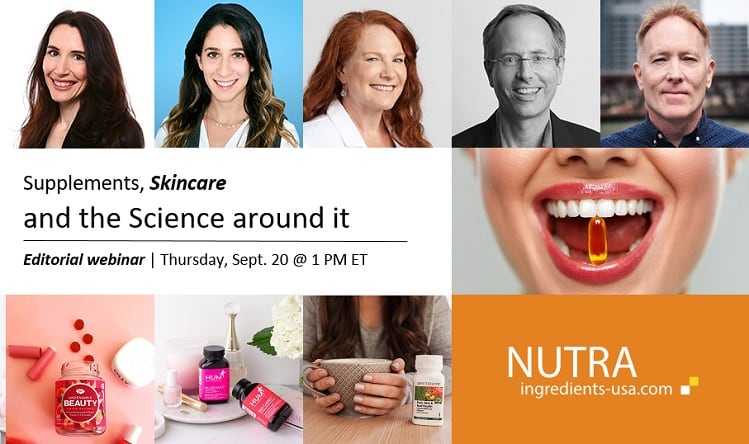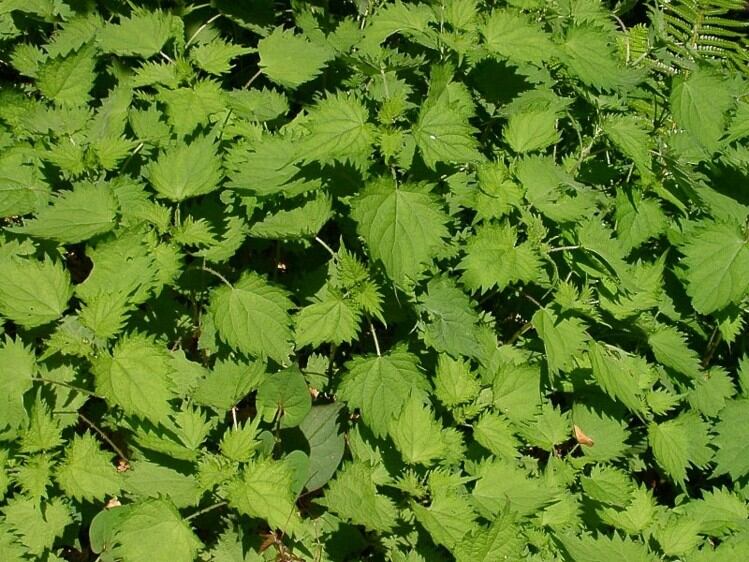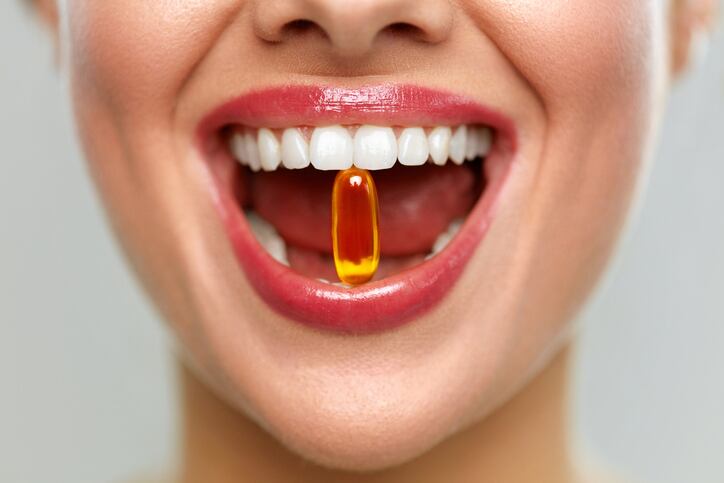Collagen
This stalwart protein in the beauty-from-within category continues to be a hot topic for researchers studying skin care and nutrition.
FREE WEBINAR
Join us for a 60-minute, FREE webinar exploring the Beauty-from-Within Category, with experts from Olly, HUM Nutrition, Amway/Nutrilite, Mintel, and CosmeticsDesign.
Thursday, Sept. 20 @ 1 PM EST
CLICK HERE FOR DETAILS AND REGISTRATION

Collagen naturally occurs in the skin, and the loss of collagen content as we age has been linked to visual signs of aging like wrinkles.
Results from a clinical trial published last month in the journal Nutrition Research suggested that oral supplementation with collagen bioactive peptides, chondroitin, glucosamine, L-carnitine, and several vitamins and minerals simultaneously improved skin and joint health.
The investigated supplement was a liquid shot called Gold Collagen from UK-based Minerva Research Labs.
Additionally, a study published in the Journal of Cosemstic Dermatology in August 2017 suggested that collagen peptides may boost the growth of fingernails by 12% and reduce the frequency of broken nails by 42%, based on observations during an open-label, placebo-controlled trial.
Hyaluronic acid (or hyaluronan)
Another compound found naturally in the skin (and degrades naturally as we age), hyaluronic acid has been studied for its skin care benefits both in topical and oral applications.
Last September, a study out of Japan that was funded by ingredient manufacturer Kewpie Corp supported the efficacy of hyaluronan for wrinkle reduction.
Published in Clinical, Cosmetic, and Investigational Dermatology, the researchers reported that participants who ingested 120 mg per day of Kewpie’s Hyabest led to improvements in skin suppleness compared to those who ingested the placebo.
Astaxanthin
A pinkish-red pigment found in algae, research on astaxanthin’s skin health benefits have been ramping up in the past few years.
Most recently, a study supported by astaxanthin manufacturer Algatech reported that, among 23 healthy Japanese adults, those supplemented with astaxanthin exhibited improved texture and reduced roughness of the skin. It was published in the journal Nutrients.
In November 2017, British and Russian researchers posited that daily supplementation with astaxanthin improved facial skin health in middle-aged subjects. They also saw a decrease of plasma levels of malondialdehyde, a marker of oxidative stress.
Another study, funded by Japanese astaxanthin manufacturer AstaReal, reported that the pigment may protect skin from harmful effects of UV radiation, such as wrinkles and increased dryness.
‘Postbiotics’
To describe the metabolites or cell-wall components released by probiotics, researchers have proposed the name ‘postbiotics.’ Mexican researchers crunched scientific data around postbiotics available so far in their May 2018 review published in Trends in Food Science & Technology.
Among the many potential benefits linked to postbiotics is skin health.
“Probiotic cell lysates may contain hyaluronic acid, sphingomyelinase, lipotechoic acid, exopolysaccharides, peptidoglycan, lactic acid, acetic acid and/or diacetyl, that can be harnessed to provide skin benefits such as skin-rejuvenating properties, improving skin innate immunity and protecting against photodamage,” they wrote in the review.

Urtica thunbergiana (chlorogenic acid)
Korean researchers studied skin health benefits of chlorogenic acid, an active component found in extract of the plant Urtica thunbergiana, which has been used medicinally in East Asia and is a common ingredient in soups and stews.
“Mouse skin treated with [the extract] had better skin hydration, moisture levels, and a more youthful appearance than UVB control group skin,” the researchers wrote in their report, published in the Journal of Functional Foods last summer.
“Compared with the [ultraviolet B-exposed, non-supplemented] control group, the groups treated with [U. thunbergiana] at two concentrations had significantly increased skin hydration by 142% and 172%, respectively.”
Learn more about Supplements, Skincare, and the Science around it during our FREE webinar
Join NutraIngredients-USA and a panel of experts from Olly, HUM Nutrition, Amway/Nutrilite, Mintel, and CosmeticsDesign on Thursday, Sept. 20, 2018 @ 1 PM Eastern as we pull back the skin on the market landscape of beauty-positioned supplements in the US. CLICK HERE TO REGISTER

The science to substantiate products in the beauty from within or anti-aging category continues to develop, led by collagen, but seeing is believing and products need to deliver the visible benefits many consumers expect.
But what other ingredients are emerging and what does the cutting-edge science say about their actions? How do today’s R&D formulators and product innovators sift through the noise and select ingredients with the most substantial research in skincare—and more importantly, communicate it effectively to consumers? And how are marketers segmenting the broad term ‘beauty’ to go beyond just ‘hair, skin, and nails?’


